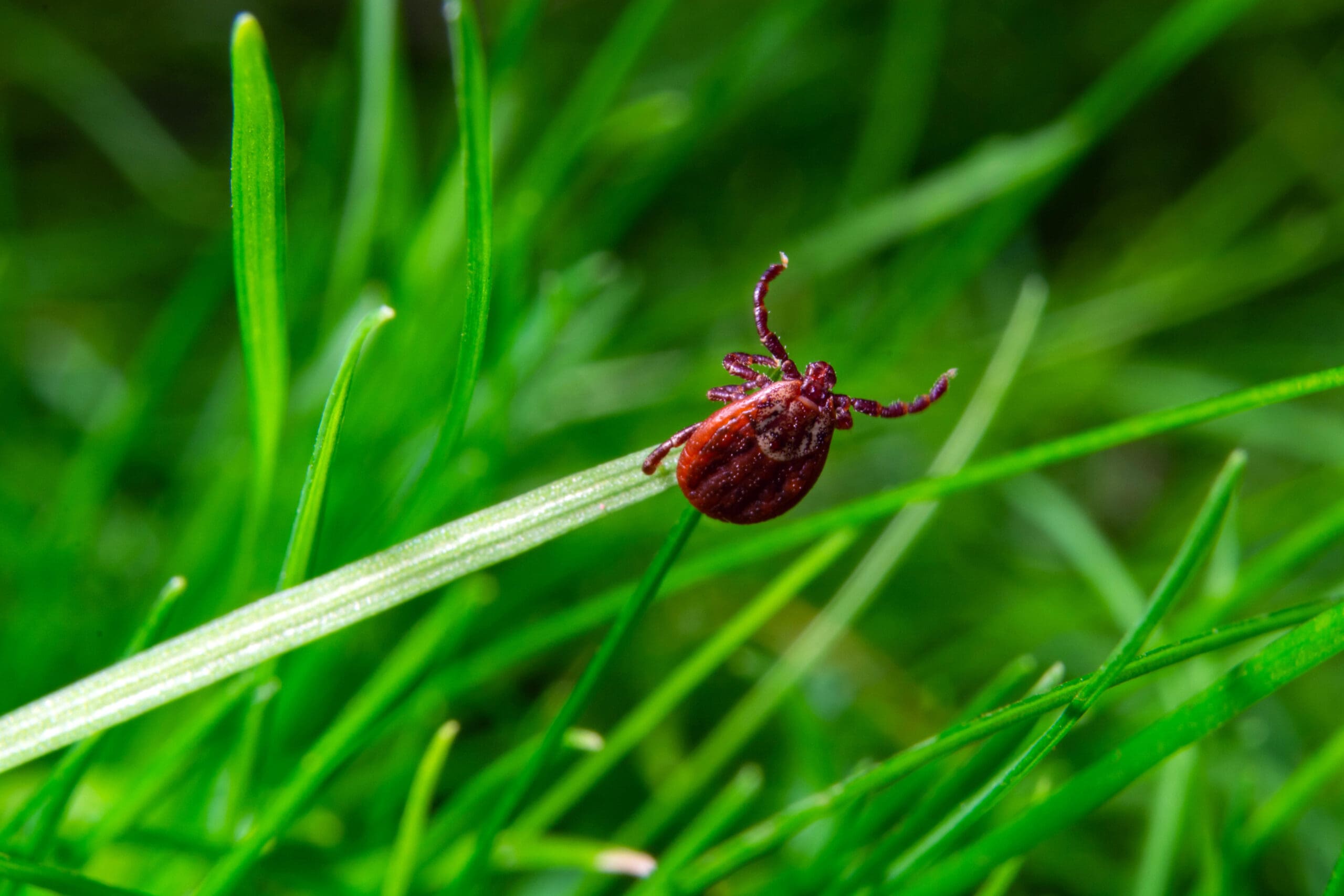
Landscaping allows your team to enjoy being in the great outdoors, but it also increases the likelihood they’ll encounter pests like ticks and mosquitoes.
These insects may carry bacteria, parasites or viruses, which is why it’s so important for your team to be aware of where they are more likely to appear, how to mitigate bites and how to treat them if they occur.
Risks of Tick and Mosquito Bites
Ticks are responsible for more than a dozen different types of diseases, including Lyme disease, Rocky Mountain Spotted Fever (RMSF), and Anaplasmosis. The transmission of these diseases depends on the geographic location of the tick and their hosts (mice, deer, etc.).
RMSF can become fatal if not treated within five days of symptom onset, while untreated Lyme disease is rarely fatal, but can progress to a diverse range of disorders affecting the heart, nervous system, bones, joints, and organs.
Lyme disease is most frequently reported in the upper midwestern, northeastern, and mid-Atlantic states. Symptoms include fever, rash, facial paralysis and arthritis.
RMSF is transmitted by different ticks in different states but is most commonly reported in North Carolina, Tennessee, Missouri, Arkansas and Oklahoma. Symptoms include high fever, severe headache, muscle aches, nausea, vomiting and edema around the eyes and on the back of hands. A rash also appears two to five days after the onset of symptoms.
Anaplasmosis is commonly reported in Northeastern and upper Midwestern states. It can cause fever, chills, muscle aches, gastrointestinal symptoms, and a severe headache.
Any clinical suspicion of RMSF or Anaplasmosis should be treated immediately as delay may result in severe illness and even death.
Be aware that tick bites that occur within the work environment are considered work-related injuries and must be recorded in accordance with OSHA recordkeeping requirements, as applicable.
Of the 200 types of mosquitoes found in the continental U.S., only 12 species can spread diseases. Nuisance mosquitoes do not spread germs but they can become a problem following heavy rains or natural disasters like hurricanes. Individuals are more likely to be bitten by nuisance mosquitoes following a hurricane or flood.
West Nile virus is the most common mosquito-borne disease. It can cause potentially serious illness. The typical time from infection to the onset of signs and symptoms is three to 14 days. Signs and symptoms of the milder West Nile virus can last a few days to several weeks and include:
- Headache
- Fever
- Tiredness
- Body aches
- Nausea and vomiting
- Sometimes, swollen lymph nodes
- Sometimes, a skin rash on the body
More serious infections can result in encephalitis or meningitis, which lasts several weeks and can cause permanent neurological problems. There is no treatment for West Nile virus.
According to the CDC, dengue, chikungunya, and Zika virus outbreaks have also occurred in U.S. states including Florida, Hawaii, and Texas.
Mitigating Bites
The first step to mitigating tick and mosquito bites is educating your team. A study on knowledge and prevention of tick-borne diseases found that Hispanics were less likely to conduct daily tick checks and to report familiarity with Lyme disease symptoms.
Training team members about ticks in their primary language is critical to preventing work-related tick-borne diseases. Your employees have the right to receive information and training in a language and vocabulary they understand about workplace hazards of tick and mosquito bites, methods to prevent them, and the OSHA standards that apply to their workplace.
Explain to crews where they are more likely to encounter these types of insects. For instance, ticks are more commonly found in wooded areas, high grass or leaf litter. They are most active in the spring, summer and fall. When possible, have your workers avoid these areas or reduce tick populations by cutting back tall grass areas. Mosquitoes are also more likely to be present in warm weather. They tend to swarm at dusk and dawn.
Stagnant or standing water is a breeding ground for mosquitos, so eliminate these spaces on your clients’ properties where possible. Water in bird baths, fountains and rain barrels should be changed out weekly to destroy mosquito habitats. Also, do not touch dead birds as West Nile virus is known to infect birds as well. Instead, notify a supervisor for proper removal.
Crew members should wear hats, light-colored clothing, and long-sleeved shirts and pants tucked into work boots or socks to prevent ticks. Light-colored long-sleeves are also advised for preventing mosquito bites. Use insect repellents containing 20 to 30 percent DEET on exposed skin and clothing. Permethrin, which kills ticks on contact, should be applied to clothing and gear.
Treating Bites
Mosquito bites should be washed with soap and water. Ice packs can reduce swelling and itching. Over-the-counter anti-itch or antihistamine cream can also help relieve itching.
Train crew members to check their skin and clothing for ticks daily. Work clothes should be placed in a hot dryer to kill ticks.
If an individual does find a tick, it should be immediately removed using tweezers. With tweezers, firmly grasp the ticks as close to the skin as possible and pull away with a steady motion. Clean the area with soap and water. Removing ticks within 24 hours significantly reduces the risk of being infected with Lyme disease.
If an employee develops symptoms of a vector-borne disease, have them seek medical attention promptly. They should also inform their doctor that they work outdoors and report any tick or mosquito bites.



